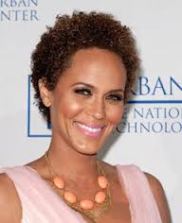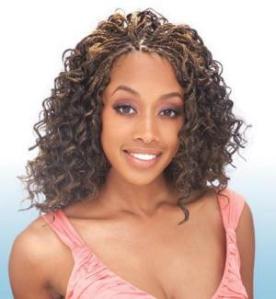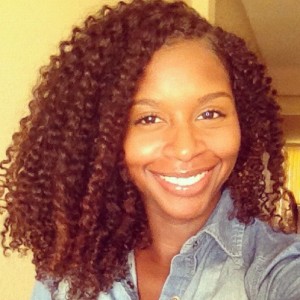Going natural may not be a huge declaration or momentous occasion for some. Perhaps you have taken your hair out of braids and want to delay using chemicals for a while. You may never look back. Some may have experienced breakage due to relaxers and believe going chemical free is best. Whatever your reasons for going natural, here are some tips to get you started on the right track.
1. Big chop boldly
Decide whether you want to big chop or transition. The big chop is simply cutting all of the relaxed hair, right up to the new growth. For this, you must be willing to have short hair; a TWA (teeny weenie afro) or shorter. You may have seen videos on YouTube of women drastically shaving their heads to big chop. You do not have to do this. The Amber Rose look isn’t for everyone! You can choose to wait until there is a sufficient amount of new growth to showcase a TWA. If you are only going to be comfortable with hair long enough to put back in a ponytail, perhaps transitioning is more suitable.
I have a round face, so I was hesitant about having short hair. I never thought very short hair could look good with my face shape. However, I found that afro textured hair framed my face well, better than a short straight cut would have. I certainly didn’t’ shave my head, I wore braid outs with my relaxed hair to blend in the little new growth, until it grew out adequately. For me personally, I knew playing around with two textures was not going to work. So I big chopped soon after giving up the chemicals.
2. Transition with care
Transitioning is holding off on cutting the relaxed hair and growing your natural hair out gradually. This is done until you are happy with the length. For this, you have to be willing to care for two different hair textures at the same time. If you decide to transition, you may want to wear braids, weaves or wigs in the meantime. Be careful that these styles are not installed too tightly because your edges may thin or you may experience breakage in other areas. This would be a terrible set back so soon into your journey.
When transitioning, avoid falling into the trap of using heat on your new growth, to blend the two textures. A small amount of sweat on the scalp will cause your new growth to revert back to its natural state. You may find yourself using heat daily as a result. When it is time to big chop, you may be left with heat damaged hair.
For transitioning, start doing braid-outs and twist-outs to get the feel of curly or kinky textured hair, and to get out of the mindset of straight hair. Check out styling tutorials on YouTube, such as FusionofCultures who transitioned for two years. Roller sets, two strand twists, bantu knot-outs and flexi-rods can be used for styling your transitioning hair.
3. Keep it simple with products
Keep your approach to products simple at this stage. Perhaps it would be best to continue to use the products you are already familiar with, unless you found that they were damaging to your hair. Focus on getting familiar with styling and caring for your hair. It is your skills that make the difference, not the products. While styling and maintaining your hair, start to research natural shampoos and conditioners and the ingredients you should avoid. Know the reasons why they should be avoided. Educating yourself about ingredients will ensure you choose the best products for your hair.
Don’t fall for marketing ploys. Products that claim to give you a certain curl pattern or accelerated growth for instance, or products that claim to be natural but aren’t. I see too many naturals become super focused on product brands, expecting a product to ‘fix’ their hair, while failing to learn good hair care practices. Most of these products do not do anything that water, natural oils and butters don’t do, unless they contain chemicals or unnatural ingredients.
You may not be too concerned about using products that are 100% natural, do what is best for you. As long as you have the sufficient knowledge, you can make an informed decision. The most important thing you can do for your hair is learn how to take care of it: how to comb it correctly, how to finger detangle, how to deal with shrinkage, when to use protein treatments, when to trim, to name a few. You don’t need to invest your time trying every product on the market and over spending as a result. The reason we used relaxers was for them to ‘fix our hair’, do not have the same attitude towards products.
4. Keep the use of heat to a minimum when dealing with shrinkage
Shrinkage is one of the main challenges for any new natural who has passed the TWA stage. Remember that shrinkage is a good thing; it shows you that your hair is healthy and simply reverting back to its natural curl pattern when wet. However, if you have very kinky hair, it may be best to keep it stretched out as much as possible, especially for styling. Check out my posts on this and practice techniques that ensure you do not have to rely on blow dryers and flat irons. Frequent use of heat can create dryness, breakage and heat damage. Heat damage is when your hair doesn’t revert back to its natural curl pattern and you are left with straight strands, in some sections. If you develop good habits in the early stages of your hair journey, you will continue this good practice for years to come. Unfortunately, bad habits are hard to break. Besides, the longer your hair gets, the less problematic shrinkage becomes. If you invest in good hair care practices now, you will reap the benefits later.
5. Go natural for you, not for others
Personally, I couldn’t care less what men on YouTube say about women with natural hair, whether positive or negative. I choose not to pay attention to general opinions about natural hair. Whether men, other women, people of other races or even employers like natural hair; I had to decide to embrace my natural hair regardless. Anyone who says they don’t like natural Afro textured hair, I put in the same category as those who say they don’t like dark skin; ignorant and not worth arguing or wasting my time with. Positive attitudes are great and welcomed, but these can change like the wind. So be secure with your natural beauty, such security must come from within and not be based on the opinions of others or on trends.
What advice would you give to anyone who is considering going natural?



















